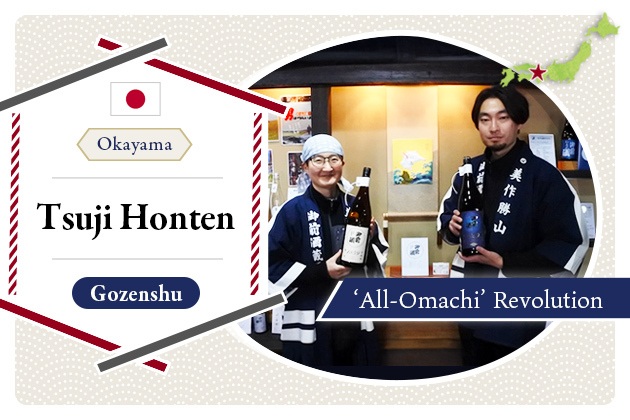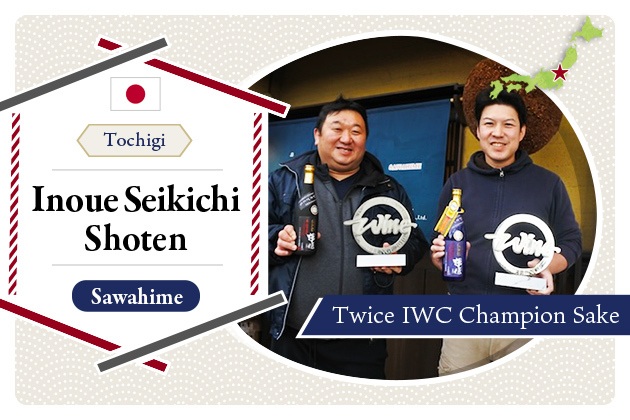
2024.05
15
Genealogy of Aiyama: the Diamond of Sake Rice
Aiyama is a rare and highly valued sake rice often used to make sweet and juicy sake. This article describes the characteristics, genealogy, and production area of this sake rice, also called "the diamond of sake rice."
What is Aiyama?
Aiyama has become a popular sake rice as a result of one sake brewery's goal to protect it, despite the fact that breeding of the rice was terminated at one point. Here is a bit more on its history.
The birth of Aiyama and the termination of breeding
It was a large-grained variety with a high shinpaku (a white part centered in the rice grain) and a high yield, but breeding trials were terminated in 1951 due to quality issues.
Reference: Ask
Two breweries protected Aiyama
Even after the termination of the breeding, some farmers in Yashiro, a town in Hyogo Prefecture where the sake rice test site was located, continued to grow Aiyama rice. Kenbishi Sake Brewery stepped in the help the farmers who were growing “Aiyama No.11” by establishing contracts to by the rice they were growing. Although cultivation was on a small scale, it stabilized production, giving Aiyama an opportunity to thrive.
Aiyama rice faced another challenge during the Great Hanshin-Awaji Earthquake of 1995 when the Kenbishi Shuzo was damaged, making it difficult to buy Aiyama outright. Takagi Shuzo,who also had their eye on using Aiyama for sake production, decided to offer a helping hand. Takagi Shuzo, which at the time was beginning to attract attention with the launch of its Juyondai brand, began producing sake using Aiyama.
Eventually, as the reputation of the sake rice grew, other sake breweries began to use it, and with the newfound popularity, farmers in other prefectures began to cultivate the rice.
Even today, when the demand for sake is declining and the production of popular rice varieties such as Yamadanishiki is decreasing, the production of Aiyama continues to increase. However, the amount of Aiyama rice produced is still very small, and strong demand from sake breweries across the country has led to high prices, earning Aiyama the nickname "the diamond of sake rice."
Quality of Aiyama exceeds Yamadanishiki
What makes Aiyama particularly outstanding as sake rice is its weight and shinpaku expression rate. The weight of rice is based on the weight of 1,000 grains combined, called senryuju. The larger is the senryuju weight, the larger is the shape of the sake rice grain, and the tighter is the grain.
The other is the rate at which the shinpaku, a mass of starch, is expressed. Sake rice with large shinpaku and low protein and fat content is considered to be ideal for sake brewing.
Aiyama's weight and shinpaku expression rate can even exceed that of Yamadanishiki, the king of sake rice. On the other hand, because of its large shinpaku, Aiyama rice can crackeasily when highly polished.
Genealogy and flavor of Aiyama
Aiyama is descended from Omachi
Aiyama was born in 1941 at the Hyogo Prefectural Agricultural Experiment Station Sake Rice Test Site with Ai-fune 117 for the mother and Yama-o 67 for the father. The name comes from "Ai (love)" on the mother's side and "Yama (mountain)" on the father's side.
Yamao 67 is a sake rice produced from Yamadanishiki and Omachi. Aifune 117 also has Funaki Omachi as its parentage, which is a strain isolated (pure lineage selection) from Omachi with the same type of genes. Therefore, it can be said that Aiyama has strong connections to the Omachi lineage.
Main production area of Aiyama
The main production area of Aiyama is Hyogo Prefecture, where it originated. Because it is a difficult variety to grow, not much is grown outside of Hyogo Prefecture. Its limited production area and relative difficulty in cultivation are the reasons why it is traded at a high price among sake rice.
Aiyama is the second most produced variety in Hyogo Prefecture, following Yamadanishiki.
*Reference: Ministry of Agriculture, Forestry and Fisheries
Outside of Hyogo Prefecture, for example, the farm Hyakushomai in Kuwayama, Chikusei City, Ibaraki Prefecture, produces Aiyama through organic cultivation.
Taste of sake made from Aiyama
With a high shinpaku expression rate and good water absorption, Aiyama rice dissolves easily in the fermentation. When brewed properly, sake made with Aiyama has a rich and mellow flavor, but without brewing precision, Aiyama can produce some unwanted flavors because of its ability to dissolve so easily in the fermentation.
Because of these characteristics, Aiyama is often used to make sweet and juicy sake, and is favored by people who enjoy Omachi, which has similar characteristics.
Sake made with Aiyama rice tends to be more expensive because the rice grains crack easily during polishing and the limited production, so the rice is often paired with yeasts that produce high amounts of “ginjo” aromatics.
Summary
In this issue, we have described Aiyama, a sake rice that has been protected by the Kenbishi Sake Brewery. Although its cultivation was in jeopardy for a time, today Aiyama is a popular sake rice that continues to enjoy steadfast popularity.
We hope you will try sake made from Aiyama. We recommend trying to compare Aiyama and Omachi!
Knowing the characteristics of sake rice will make it easier to find the sake that best suits your tastes. Take a look at our other articles explaining other varieties.
Pickup Articles
2019.01.18
2019.01.25
Trending Articles
Popular Articles
Recent Articles













